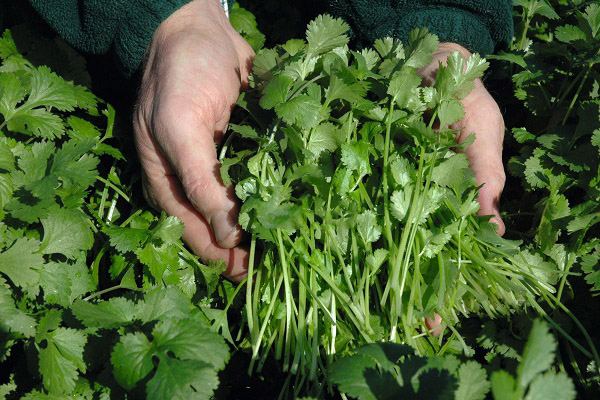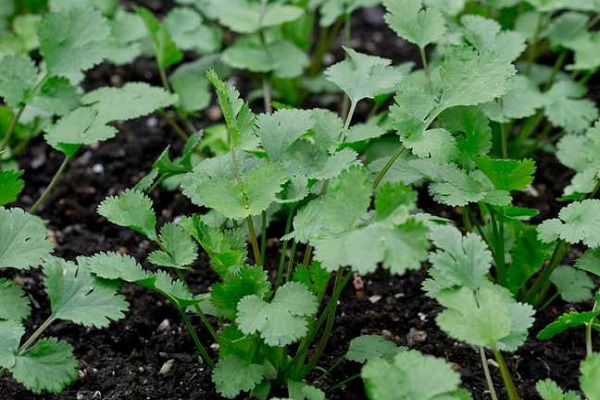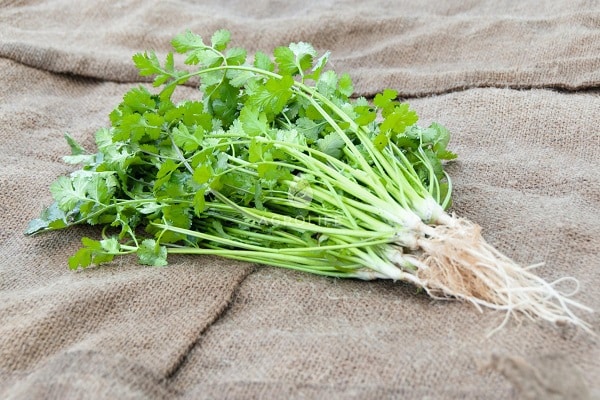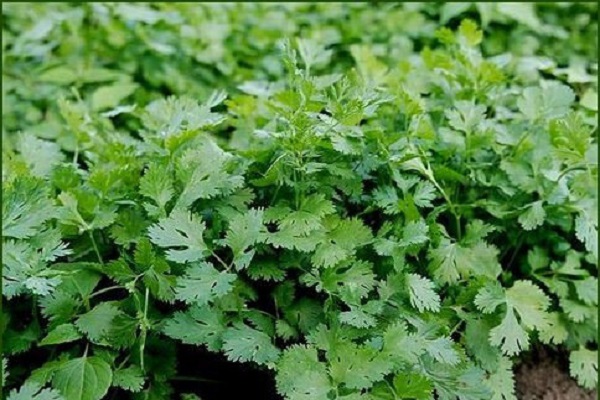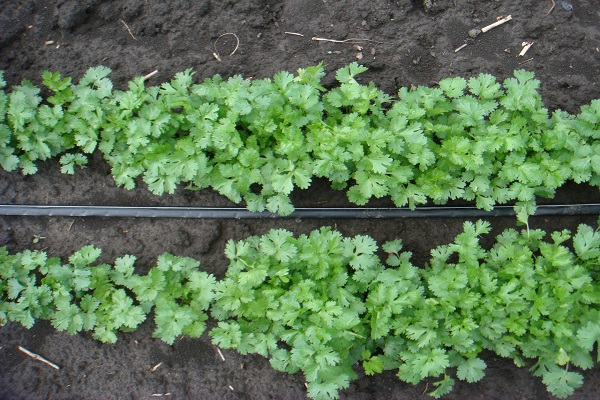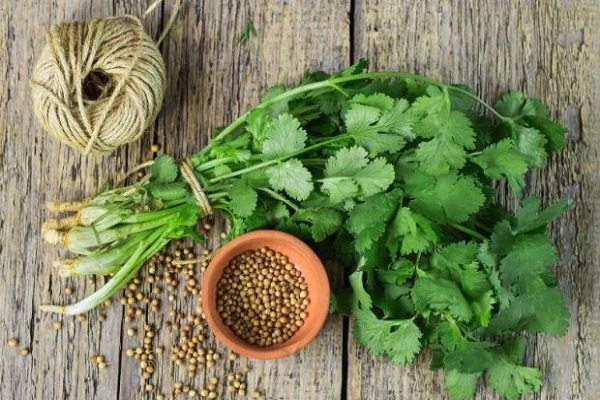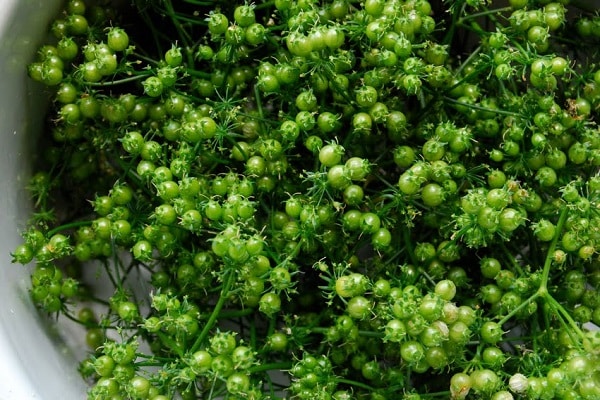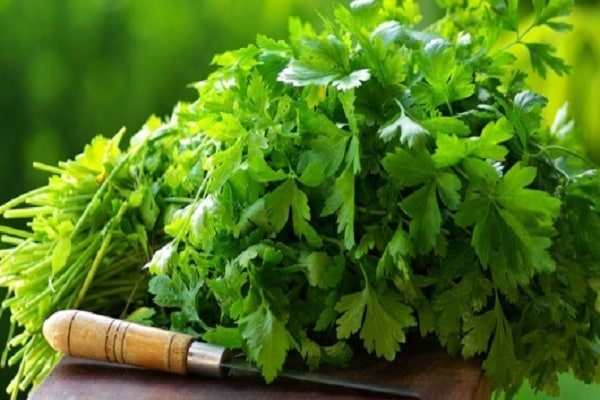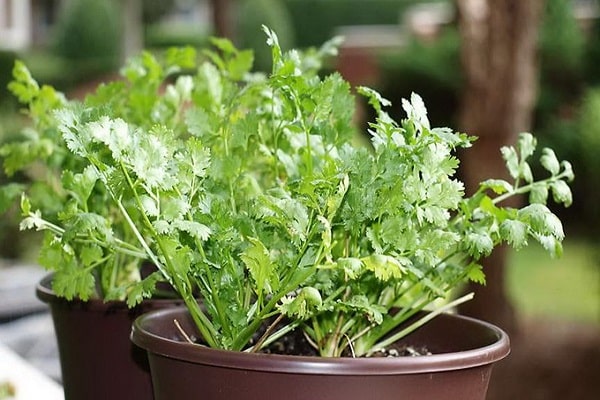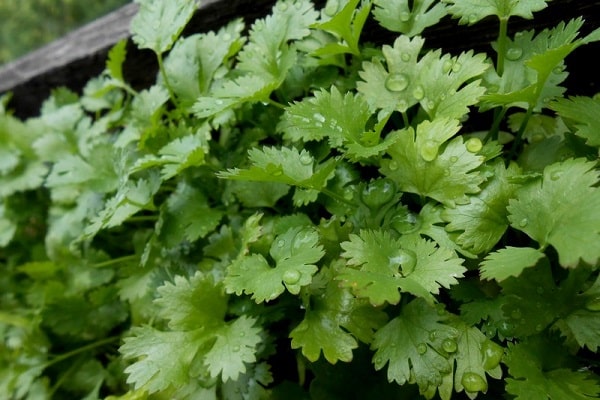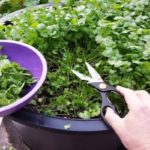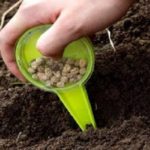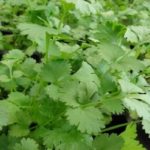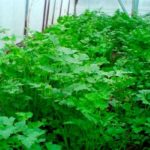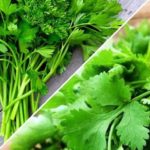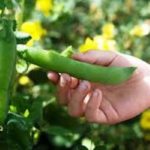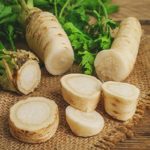Of the spicy herbs, coriander is the most popular among gardeners. Coriander Caribe, developed by the Dutch, has a number of excellent characteristics and is noticed by summer residents. It is grown to be used as an aromatic seasoning for the winter. The plant has perfectly adapted to cold summer conditions and delights with its bright greenery in August, when other herbs have already opened their seed umbrellas.
Description of the variety
The coriander variety Caribe is classified as an essential oil-bearing herb.
The annual plant has an erect stem of medium height. Strongly dissected rosettes of leaves attract with bright greenery. The surface of the leaf blade is smooth, delicate, slightly wrinkled.40–45 days after emergence, the stems are suitable for fresh consumption. The weight of one plant reaches 30 grams. You can collect up to 1.5 kilograms of green herb per square meter.
Coriander shoots later than other varieties. And the strong aroma emanating from the leaves and stems allows them to be used in the preparation of main courses, salads, and soups.
The flowers of cilantro Caribe are light pink and surprise with their unique tart smell, attracting bees, wasps, and bumblebees.
Umbrellas with seeds are collected after 70–75 days of the growing season.
Growing
For planting coriander choose areas with light and fertile soils. They should be illuminated by the sun and located in a windless area. Start sowing cilantro in early spring, planting the seeds to a depth of 1 to 3 centimeters.
In order for the seedlings to appear on time, in the fall the area under the herb is dug up and organic and mineral fertilizers are applied. Half a bucket of humus per square meter and 200 grams of wood ash are suitable as fertilizer. More green mass will be produced if the soil is enriched with nitrogenous fertilizers, superphosphate and potassium salt.
Planting scheme for Caribe coriander 20x7 or 30x10 centimeters. Before planting, the soil is well moistened. The seeds of the plant are placed in rows or randomly, sprinkled with dry soil.
Grass seedlings appear in 14–20 days. After this, you can begin sowing the next batch of cilantro. With this planting you can have fresh herbs all summer long.
Features of care
Cilantro does not require special care, just after planting:
- water;
- loosen;
- thin out;
- weed
Grass beds should be watered 1-2 times a week. Then the green mass will be juicier and more aromatic.
Thinning will save the plant from being crowded in the garden and will allow it to develop better. During the procedure, excess stems are pulled out, leaving a distance between shoots of 7–8 centimeters.
Loosening the row spacing will allow the soil in the beds to be saturated with moisture and air.
If you violate the rules of agricultural technology and do not water the grass, then the coriander will begin to shoot flowers faster, and the growing season will end. Excessive soil moisture will lead to the development of fungal infections.
Advantages and disadvantages
The advantages of choosing the Caribe coriander variety include:
- exquisite taste of greens, its unique aroma;
- cold resistance of the plant;
- immunity to diseases;
- long-term green yield;
- good transportability;
- wonderful presentation.
The variety has no disadvantages. If you don't care for it well, it won't produce a lot of tasty, aromatic and juicy greens. Coriander is useful because it contains many vitamins and beneficial elements. Those who have a stomach ulcer, kidney failure, or suffer from diabetes should not consume a lot of spicy greens..
Pests and diseases
Wet and cold weather is detrimental to many vegetable plants. Coriander is no exception. The herb becomes covered with spots, its stems look like they are burnt. Eventually, the plant may die. Measures for the prevention and control of powdery mildew and rust include procedures for treating seeds before planting. It is important to burn plant residues in a timely manner after harvesting, then digging up the soil. Planting coriander every year in different parts of the garden will also save you from infection.
Among the aggressive pests of cilantro, it is worth noting the coriander seed eater. Its larvae bite into the fruits, eating them almost completely.Various types of bugs that live on the leaves and stems during the growing season of the plant are also active. The fall armyworm damages seeds by attacking them after wintering.
Pests must be controlled by treating with insecticidal preparations.
Harvest and storage
They begin to collect the green mass from coriander when the plant stems reach 10–12 centimeters in length. They are cut off close to the ground. Only freshly cut cilantro shoots are eaten. Old stems and leaves will taste bitter and ruin the dish.
The seeds are considered ready for use when they turn 40 percent brown. Cilantro and its seeds are suitable for canning, pickling, and when crushed they are used to add to confectionery, meat, fish and vegetable dishes.
It is better to store fresh coriander stems in bags that are placed in containers and left at an air temperature of 1 degree above zero. At air humidity of 85–90%.
The chopped stems and leaves are dried, salted and added to soups and main courses during the winter. The seeds are dried and stored in a dry place in a hermetically sealed container. They are placed whole in marinades during the preparation of fish and vegetable products. Seed powder is useful to add to drinks and tea.

